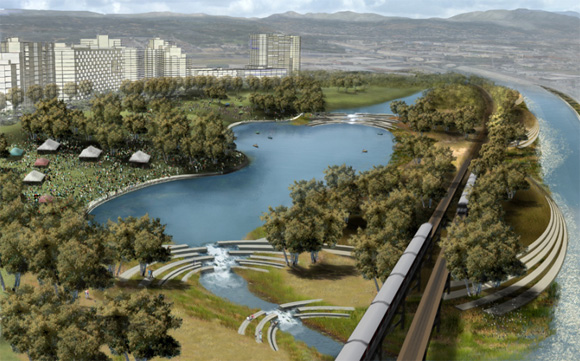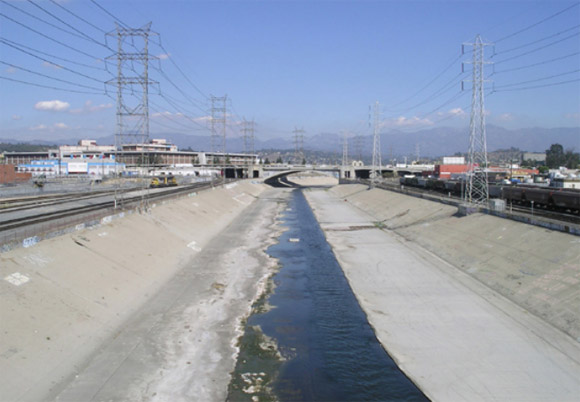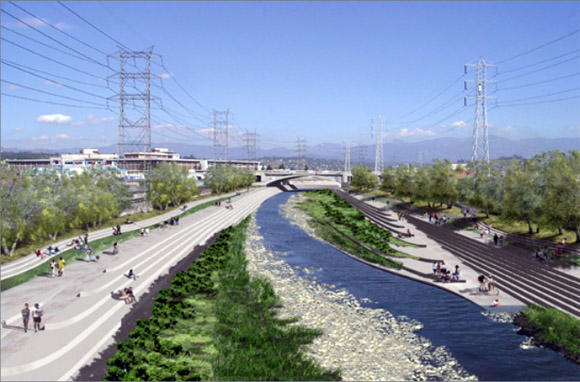
Before the Los Angeles River was a concrete channel, it was a typical river with banks and all. Flooding, however, was actually a devastating problem in the 19th century and first half of the 20th century. It wasn’t until 1936 when this flooding was brought under control through “channelization.” Our Congress had ordered the US Army Corps of Engineers to concrete the river for almost its entire 51-mile length. Much of the route became directed underground and the rain went almost exclusively straight to the river, creating extremely powerful flows within the channel. The river efficiently carried the water away from the city, drying up all the wetlands and habitats that used to surround it.
The river used to be the source of life for the Tongva (since 5,000 BC) and Spanish (since 1760’s). After the river was concreted, railroads, warehouses and other industries started to line the edge of the river, literally isolating it from the people and communities. The river now ran through all that was undesirable, the back of everything: Backyards, warehouses, trash dumps, power lines and freeways.
This “channelization” also created environmental problems…
- Since the river now runs underground, the water isn’t constantly exposed to sunlight and this allows bacteria to grow prolifically. The UV radiation from the sun naturally disinfects river water which is why it is said one of the best ways to dry your laundry is to hang it up in the sun to dry.
- The natural “soft-bottom” dirt ground of a river acts as a filter and naturally cleanses the water in a process known as infiltration. Since the bottom of the river is now concrete, contaminants travel through the entire length of it and all dump in one spot without any soaking of replenishment of the aquifers (natural groundwater).
As a result, when the water finally empties into the Long Beach Harbor, there is a massive influx of microbes and contaminants.
Enter the LA River Revitalization Plan
The Los Angeles Revitalization Master Plan is a 25-50 year blueprint that will attempt to break apart this concrete channel so that it won’t just be a massive hidden storm drain disconnected from our lives and nature. It will try to revamp the space to restore the health of the river, protect wildlife and best of all, beautify the entire city around the river through recreational spaces such as bike paths and parks.

The goal is to turn parts of the channels like this one found above 1st street in downtown…

Into a recreational space with a restored bottom to create wetlands full of native plants.

The idea that one could even paddle or kayak through parts of the river have already begun with the “Paddle the LA River” pilot program that began in the summer of 2011. They mostly focus on just paddling in this one 1.5 mile stretch of the river that runs through Woodley Park and the Sepulveda Basin.
Now, when these changes will begin to happen is another story with everyone talking about how there’s no money for anything all the time. Slowly but surely is better than nothing, I hope.






